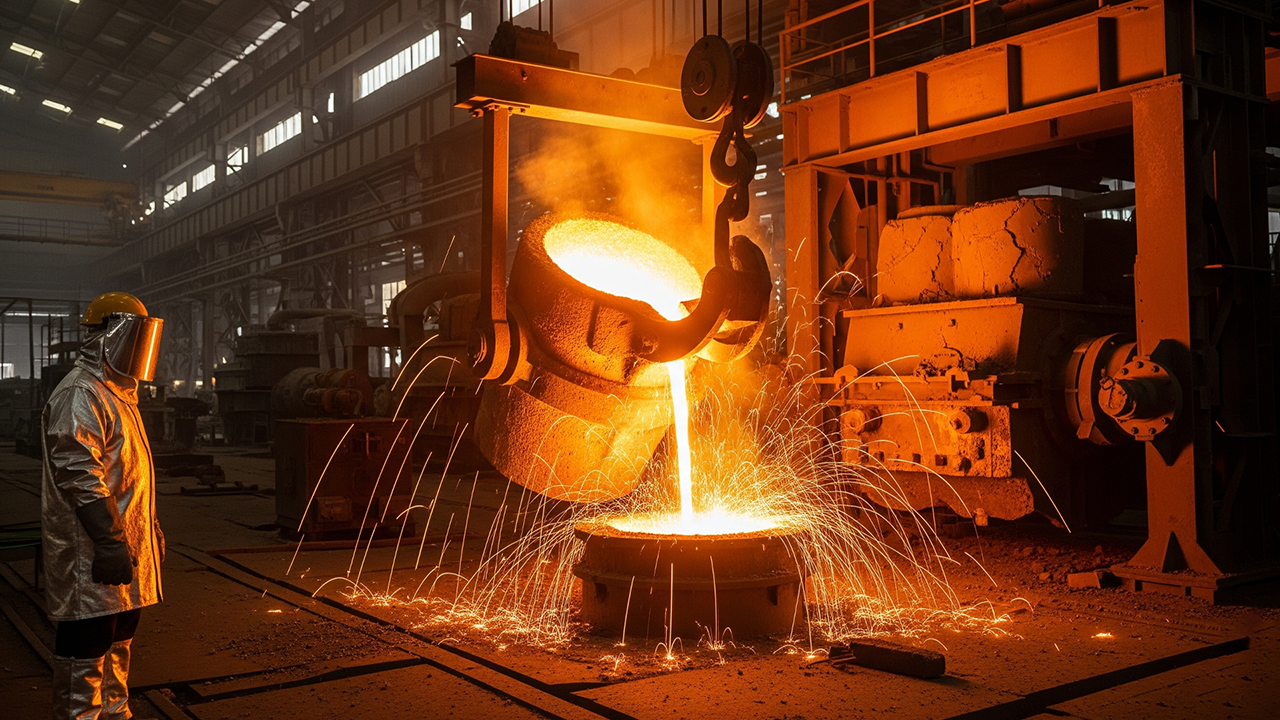
JSW Steel, Posco Ink Pact to Explore 6 MTPA Integrated Steel Plant in India
JSW Steel, Posco Ink Pact to Explore 6 MTPA Integrated Steel Plant in India
JSW Steel and South Korea’s Posco have signed a non-binding Heads of Agreement (HoA) to explore setting up a 6 million tonnes per annum (MTPA) integrated steel plant in India. The pact, signed in Mumbai, marks another step in the two companies’ efforts to deepen collaboration in one of the fastest-growing steel markets globally. Odisha has emerged as one of the top locations being evaluated for the project.
The signing ceremony was attended by Lee Ju-tae, representative director and president of Posco Holdings, and Jayant Acharya, joint managing director and CEO of JSW Steel. The HoA lays down the framework for a proposed 50:50 joint venture first announced in October 2024. A detailed feasibility study will follow to determine location, investment size, raw material sources, and logistics.
Strategic Significance for Odisha and India
Odisha is a frontrunner for the site, thanks to its abundant iron ore reserves, coal availability, and access to ports. “JSW and Posco are looking at various sites which will make sense in terms of proximity to mines, logistics, and ports. Odisha remains one of our potential sites,” Acharya said. The state already hosts several large-scale steel plants and is positioning itself as a global hub for mineral-based industries.
The venture is expected to support India’s Atmanirbhar Bharat initiative by reducing reliance on imports and creating a globally competitive steel manufacturing ecosystem that caters to both domestic and export markets. For JSW Steel, India’s largest steel producer with 34.2 MTPA of domestic capacity, the deal adds momentum to its capacity expansion drive. The company is targeting 41.9 MTPA capacity by September 2027, and 50 MTPA in India by FY31. Including its US operations, JSW aims for 51.5 MTPA capacity by that period.
Posco’s India Journey
For Posco, one of the world’s leading steelmakers, the partnership represents another attempt at upstream investment in India after several aborted projects. Its most ambitious plan — a $12 billion, 12 MTPA greenfield project in Odisha — fell through after a decade of delays and protests. Later tie-ups with Shree Uttam Steel and Power, Steel Authority of India (SAIL), and Rashtriya Ispat Nigam also did not materialize. A proposed collaboration with the Adani Group in 2022 similarly did not advance.
Currently, Posco operates a downstream facility in Maharashtra producing galvanized steel for automotive and appliance industries. The joint venture with JSW could finally give the South Korean firm a foothold in India’s upstream steel sector.
Investment and Outlook
Industry estimates suggest that building greenfield steel capacity costs around $1 billion per million tonnes. At 6 MTPA, the proposed facility could therefore require investments upwards of $6 billion (nearly ₹50,000 crore). Acharya noted that the final cost would be determined once technology, plant design, and other contours of the project are finalized.
India’s steel demand is projected to grow sharply, backed by rising investments in infrastructure, housing, and manufacturing. According to the National Steel Policy 2017, India targets 300 MTPA of steel-making capacity and 255 MTPA of consumption by 2030–31, supported by urbanisation, smart cities, and transport corridors. The Ministry of Steel estimates annual demand growth of 7–7.5 percent over the next decade, making India the fastest-growing large steel market. This backdrop makes the JSW-Posco venture timely, positioning both companies to capitalise on long-term demand.
Posco’s Lee Ju-tae said India is central to the future of global steel demand. “Our collaboration with JSW is based on mutual trust and a shared long-term vision. This initiative represents our commitment to supporting India’s industrial growth while creating long-term value for both organisations,” he said.
China dominates the global steel industry with a production capacity of over 1,000 MTPA, accounting for more than half of the world’s total output. In contrast, India, the world’s second-largest steel producer, has a current capacity of about 160 MTPA and aims to expand this to 300 MTPA by 2030–31 under the National Steel Policy. While China’s growth is plateauing due to slowing domestic demand and stricter environmental regulations, India is emerging as the next major growth engine for steel, driven by infrastructure, housing, and manufacturing.
